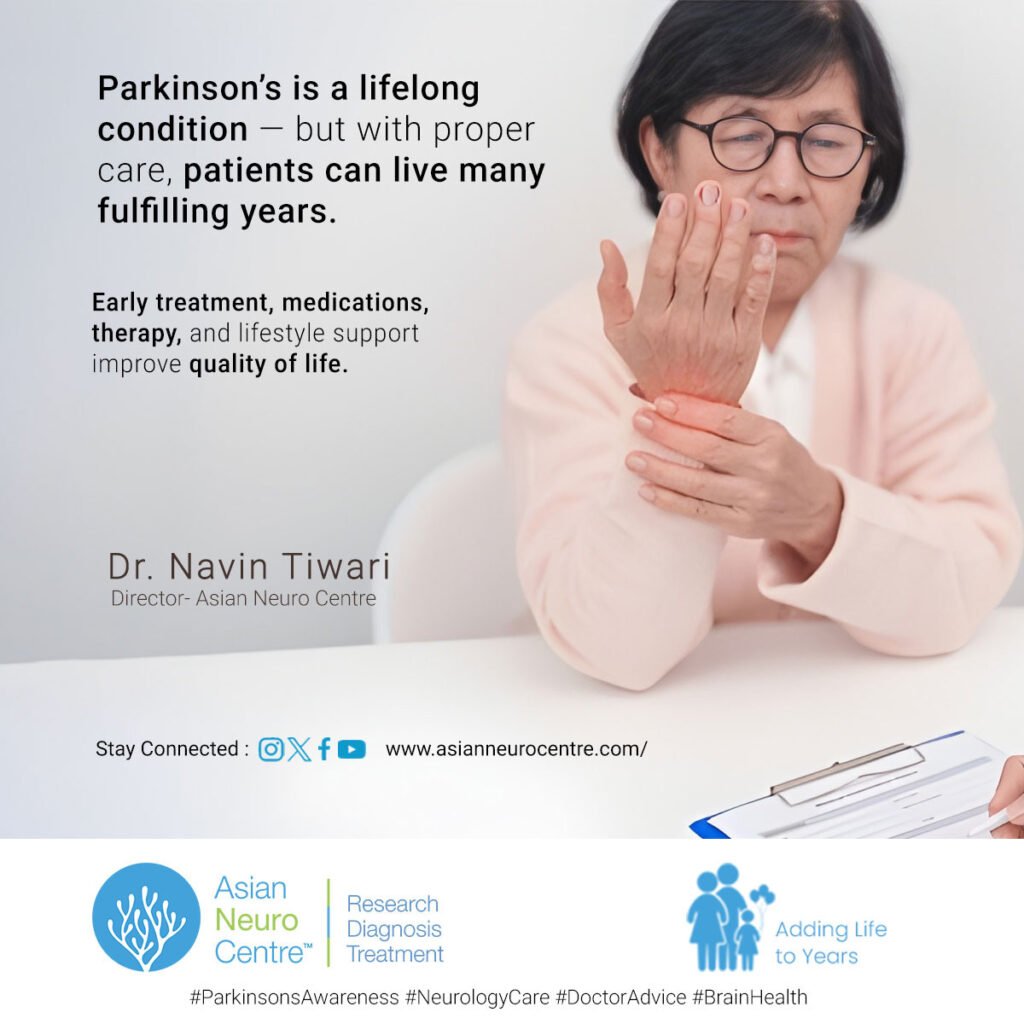- Have any questions?
- 911 12345 29
- info@asianneurocentre.com
How Long Do People Live with Parkinson’s Diagnosis?
What Happens When You Are Diagnosed with Parkinson’s?
September 27, 2025The question of life expectancy following a Parkinson’s disease (PD) diagnosis is a natural concern for patients and their families.
While the answer is complex and highly individualized, modern advancements in treatment have significantly improved the outlook for most individuals living with the condition, often leading to a near-normal or normal lifespan.
What is Parkinson’s Disease?
Parkinson’s disease is a progressive neurological disorder that primarily affects movement. It develops gradually, often starting with a barely noticeable tremor in one hand.
The condition results from the loss of dopamine-producing neurons in a specific area of the brain. Dopamine is a chemical messenger essential for controlling movement and coordination.
The primary symptoms of Parkinson’s are motor-related, including tremors (shaking), bradykinesia (slowness of movement), rigidity (stiffness), and postural instability (impaired balance).
However, non-motor symptoms such as sleep problems, cognitive changes, depression, and loss of smell can also significantly impact a person’s quality of life. Importantly, while PD is a serious, chronic condition, it is not considered a fatal disease itself.

Life Expectancy After Parkinson’s Diagnosis
In the past, a Parkinson’s diagnosis was associated with a markedly reduced life expectancy. However, due to continuous medical progress, including the development of effective medications like levodopa and improved management of complications, many people with PD now experience a life expectancy that is normal or very close to normal compared to the general population.
While the disease itself is not directly fatal, it can make an individual more vulnerable to complications that may ultimately reduce their lifespan.
The most common causes of mortality related to PD are complications such as aspiration pneumonia (caused by difficulty swallowing) and serious injuries resulting from falls.
The overall prognosis and length of survival vary widely based on several key factors:
- Age at Diagnosis: Individuals diagnosed with PD at a younger age (especially before 60) often have a longer survival time post-diagnosis, sometimes living 20 to 30 years or more. Conversely, people diagnosed at an older age may face a faster rate of decline, though the actual reduction in total life expectancy compared to their age-matched peers may be smaller.
- Disease Severity and Type: The severity of initial symptoms and the rate of progression play a crucial role. Those who experience early cognitive decline, recurrent falls, or visual hallucinations tend to have a greater reduction in life expectancy. Some rarer forms of “atypical Parkinsonism” are also associated with a significantly shorter survival time than typical PD.
- Access to Treatment and Quality of Care: Consistent management with appropriate medications, physical therapy, and a healthy lifestyle is critical to managing symptoms and reducing the risk of complications like falls and infections, thereby improving both quality of life and longevity.
Conclusion
For most people, a Parkinson’s disease diagnosis is no longer a definitive sentence for a drastically shortened life. While PD presents lifelong challenges, advancements in medical treatment, proactive complication management, and a focus on physical and mental well-being allow the majority of patients to live a full and nearly normal lifespan.
The most important steps following diagnosis are to seek specialized care from a movement disorder specialist, adhere to a comprehensive treatment plan, and maintain a focus on a healthy, active lifestyle to best mitigate the disease’s effects.
Dr. Navin Tiwari
Consulting Neurologist
